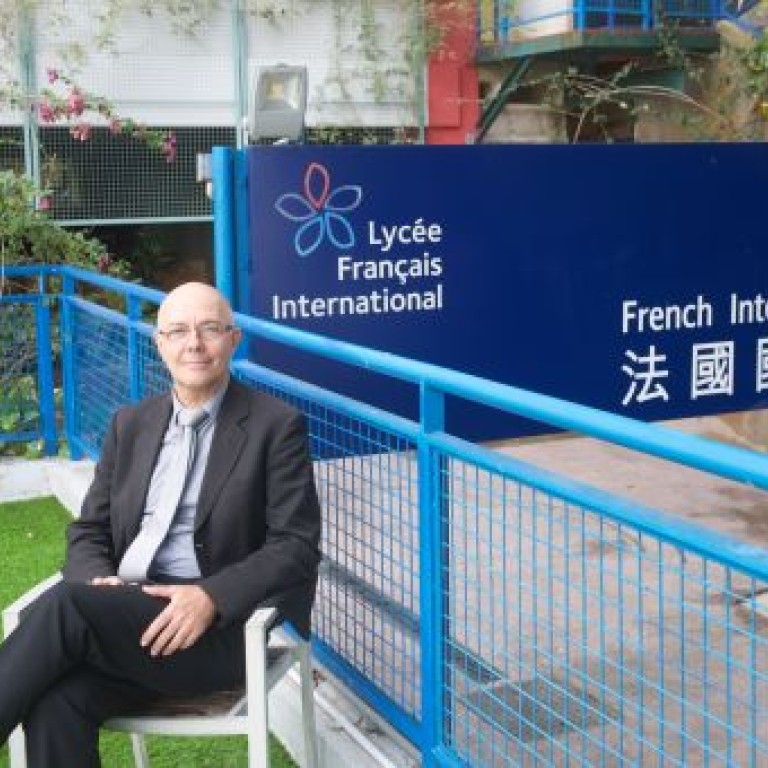
The French educational revolution: An exclusive look at FIS’ unique new campus
With four campus locations and a total of 2,673 students, the French International School (FIS) already has a substantial presence in Hong Kong. So, their latest expansion...
With four campus locations and a total of 2,673 students, the French International School (FIS) already has a substantial presence in Hong Kong. So, their latest expansion project is not just about increasing the numbers.
A fifth campus, though, is set to open in September 2018 in Tseung Kwan O and will be able to accommodate up to 1,050 additional students, around 700 of which will be primary school pupils. With this step, the key objective is to provide even better opportunities for a well-rounded bilingual education in surroundings conducive to learning.
“When I was asked to think about this project, I thought of our community and what they want,” says Christian Soulard, headmaster of FIS. “That is a bilingual education in English and French. There is a huge demand in the local French community for this kind of education. And English-speaking parents who enrol their children in our school usually want them to get a bit of a French education too.”

The new campus is expected to provide new opportunities for students.
The French community in Hong Kong is growing rapidly, having doubled to around 20,000 since 2006. This has led to high demand for places at FIS, not just from French nationals, but also from locals and international students from other countries.
New joiners can choose either the French stream, based on France’s national curriculum, or the International stream, which uses the British national curriculum and then the IB diploma in the last two years. The two generally operate independently, but Soulard wants to see more collaboration and interaction on the new campus.
To this end, the new campus will have some unique architectural features. The design of the new main building is based on the ancient Roman “Villa”. Each year group will have its own floor or “unit”, but there will also be a central common area, or “agora”, where students from both streams can mingle during assemblies and breaks.
“You will have French teachers, English-speaking teachers, and kids whose mother tongue is French or English living and working together in one space,” Soulard says.
Each unit will have five classrooms, three dedicated to the French stream and two for the international stream, with the agora serving as a flexible space for general class activities. This makes it much easier for teachers to organise cross-stream collaboration projections and group-learning activities.

Each "unit" will have five classrooms, each connected to the central "agora".
“That’s the idea, collaborative practice in a naturally bilingual environment, but at the same time respecting the two separate curriculums,” Soulard says. “We hope concept of Villa will facilitate this kind of education, but at the same time, I’m also insisting that there be a real respect for each stream’s core curriculum.”
Soulard believes if the Villa campus project is a success, other schools in Hong Kong offering a bilingual education may follow suit.
“Around the world, I haven’t seen many schools with this style of education,” he says. “I suppose that if it is a big success it may be adopted by other schools. That would be fantastic for us.”
The new campus will have a strong environmental focus, encouraging the use of sustainable energy sources like rooftop solar panels to minimise the school’s carbon footprint.
“We will have a garden maintained by students and teachers and lessons about sustainable development and sensitivity to nature from a young age,” Soulard says. “All our science teachers are working on developing a curriculum which emphasises these things.”
In addition, the new campus will have state-of-the-art sporting facilities including an indoor gymnasium, swimming pool and outdoor track. These, along with a 300-seat auditorium, will be made available to the public wherever possible in order to benefit the wider community.

A 3D rendering of the Tseung Kwan O campus exterior.
“We have a great relationship with the French consulate, which means the school will host quite a few events around French culture,” Soulard says.
Of all the potential locations suggested by the Education Bureau, Soulard says Tseung Kwan O was the top choice for a variety of reasons.
“We have this sensation that the French community is spread around Hong Kong,” he says, adding that many French expats are now opting to live in Kowloon and the New Territories. “We felt Tseung Kwan O was a new area of development and a lot of people are going to move to this kind of district. The facilities are absolutely excellent, there are two MTR stations close by, and we thought it was a great location, not too far from the city centre.”
FIS first opened in 1963 with just 30 students. Since then, it has grown steadily to become the powerhouse it is today. The campus on Jardine’s Lookout opened in 1984, and the main secondary school campus on Blue Pool Road in Happy Valley opened in 1999. Subsequent expansion saw a Chai Wan campus in 2011, followed by another in Hung Hom in 2014.
Concerning the latest development, Soulard and the rest of the FIS team are excited and optimistic.

Soulard is excited about the Villa concept.
“There’s still a lot to do; we are not completely ready, but it is definitely on the way.”
